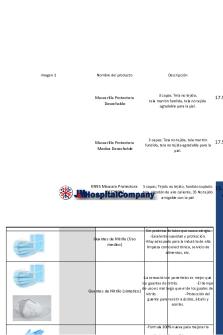Kyoto brochure 010617020212 Nurul Nauwal Binti Mohamed Adzuwan PDF

| Title | Kyoto brochure 010617020212 Nurul Nauwal Binti Mohamed Adzuwan |
|---|---|
| Course | science |
| Institution | Kolej Matrikulasi Kedah |
| Pages | 4 |
| File Size | 209.5 KB |
| File Type | |
| Total Downloads | 6 |
| Total Views | 141 |
Summary
entahla nak . ko search ko buka je la itu semua kerja aku ko baca la wei semua ada sudah check dengan lecturer aku dah betul semua ko baca la baik baik bye...
Description
KYOTO
Best places to visit
Kyoto served as Japan's capital and the emperor's residence from 794 until 1868. It is one of the country's ten largest cities with a population of 1.5 million people and a modern face. Over the centuries, Kyoto was destroyed by many wars and fires, but due to its exceptional historic value, the city was dropped from the list of target cities for the atomic bomb and escaped destruction during World War II. Countless temples, shrines and other historically priceless structures survive in the city today.
Nijo castle
Hours and fee
Nijo Castle was built in 1603 as the Kyoto residence of Tokugawa Ieyasu, the first shogun of the Edo Period (1603-1867).
Hours
After the Tokugawa Shogunate fell in 1867, Nijo Castle was used as an imperial palace for a while before being donated to the city and opened up to the public as a historic site. Its palace buildings are arguably the best surviving examples of castle palace architecture of Japan's feudal era, and the castle was designated a UNESCO world heritage site in 1994.
8:00 to 18:00 (July and August)
Visitors to Nijo Castle enter the castle grounds through a large gate in the east. English audio guides are available for rent at a kiosk just inside the gate.
December 29-31; just the Ninomaru Palace is also closed on Tuesdays in January, July, August and December (or following day if Tuesday is a national holiday) and December 26-28
How to get there The entrance of Nijo Castle is a short walk from Nijojo-mae Station along the Tozai Subway Line. From Kyoto Station, take the Karasuma Subway Line to Karasuma-Oike Station and transfer to the Tozai Line to Nijojo-mae Station. The whole trip takes about 15 minutes and costs 260 yen. Alternatively, the castle can be reached from Kyoto Station by Kyoto City Bus numbers 9, 50 or 101 (15-20 minutes, 230-yen one way) or from ShijoKawaramachi by Kyoto City Bus number 12 (15 minutes, 230 yen one way).
8:45 to 17:00 (October to June)
8:00 to 17:00 (September) Admission ends one hour before closing time Entry to Ninomaru Palace from 8:45 to 16:10 (until 17:10 in July and August) Closed
Admission 620 yen; an additional fee of 410 yen is required to enter the Ninomaru Palace (English audio guides are available for 520 yen; furthermore, 60-minute guided tours of the castle in English are held twice per day for 1000 yen with online reservations possible via Voyagin)
Kyoto imperial museum
Hours and fees
The Kyoto Railway Museum was opened in April 2016 by JR West on the former site of the Umekoji Train and Locomotive Museum, about a twentyminute walk west of Kyoto Station. It is one of Japan's three great railway museums alongside JR East's Railway Museum in Saitama and JR Central's SCMAGLEV and Railway Park in Nagoya.
Hours
The museum displays railway uniforms, tools and an abundance of other appurtenances from past eras and boasts one of Japan's largest dioramas, in which miniature trains are controlled single-handedly by a skilled operator as they traverse the intricately detailed landscape. How to get there The Kyoto Railway Museum is a few steps from Umekoji-Kyotonishi Station or a 20-minute walk from Kyoto Station. Alternatively, it is a short bus ride from Kyoto Station by bus number 103, 104, 110, 86 or 88. Get off at Kyoto Railway Museummae bus stop.
10:00 to 17:00 (entry until 16:30) Closed Wednesdays (except when Wednesday is a national holiday and during spring and summer school holidays), December 30 to January 1 Admission 1200 yen...
Similar Free PDFs

Lecture 7 - Mohamed Almekkawy
- 2 Pages

Brochure
- 3 Pages

Protocollo di Kyoto
- 2 Pages

PS6 - Mohamed Almekkawy
- 4 Pages

Portafolio - BROCHURE
- 2 Pages

Depression brochure
- 3 Pages

Ecodial Brochure
- 4 Pages

ADHD Brochure
- 2 Pages

Brochure Introduction
- 2 Pages

Wiradjuri - Brochure
- 4 Pages

Psychodynamics brochure
- 4 Pages
Popular Institutions
- Tinajero National High School - Annex
- Politeknik Caltex Riau
- Yokohama City University
- SGT University
- University of Al-Qadisiyah
- Divine Word College of Vigan
- Techniek College Rotterdam
- Universidade de Santiago
- Universiti Teknologi MARA Cawangan Johor Kampus Pasir Gudang
- Poltekkes Kemenkes Yogyakarta
- Baguio City National High School
- Colegio san marcos
- preparatoria uno
- Centro de Bachillerato Tecnológico Industrial y de Servicios No. 107
- Dalian Maritime University
- Quang Trung Secondary School
- Colegio Tecnológico en Informática
- Corporación Regional de Educación Superior
- Grupo CEDVA
- Dar Al Uloom University
- Centro de Estudios Preuniversitarios de la Universidad Nacional de Ingeniería
- 上智大学
- Aakash International School, Nuna Majara
- San Felipe Neri Catholic School
- Kang Chiao International School - New Taipei City
- Misamis Occidental National High School
- Institución Educativa Escuela Normal Juan Ladrilleros
- Kolehiyo ng Pantukan
- Batanes State College
- Instituto Continental
- Sekolah Menengah Kejuruan Kesehatan Kaltara (Tarakan)
- Colegio de La Inmaculada Concepcion - Cebu




